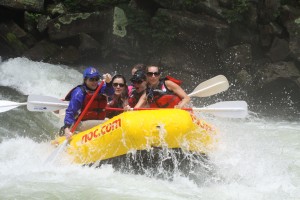Personally, I believe that the greatest instructional shift that teachers have had to make with the implementation of the Common Core, particularly, is the introduction of the mathematical practice standards and the ELA speaking and listening standards and writing standards. The expectation that these standards be integrated across the curriculum, running over into the NC Essential Standards, paves the way for classrooms to become dynamic learning hubs where a teacher is a facilitator of learning rather than a “sage on the stage”. These standards are the portion of our new curriculum that has students delving deeper into each content area and demonstrating conceptual understandings of and building connections between the subject areas.
I see this change in curriculum as having a positive influence on the use of technology in the classroom. The Common Core urges teachers to take instructional technologies beyond a game on an iPod. Teachers are called to help their students to demonstrate their understanding through multiple mediums, to collaborate, and to justify their reasoning, and to uncover evidence or ambiguities within text. Many technologies for learning can assist in all these areas. These new standards provide the perfect jumping off point for teachers who have been anxious about integrating technology into their instruction or unsure about how to effectively use technology.
